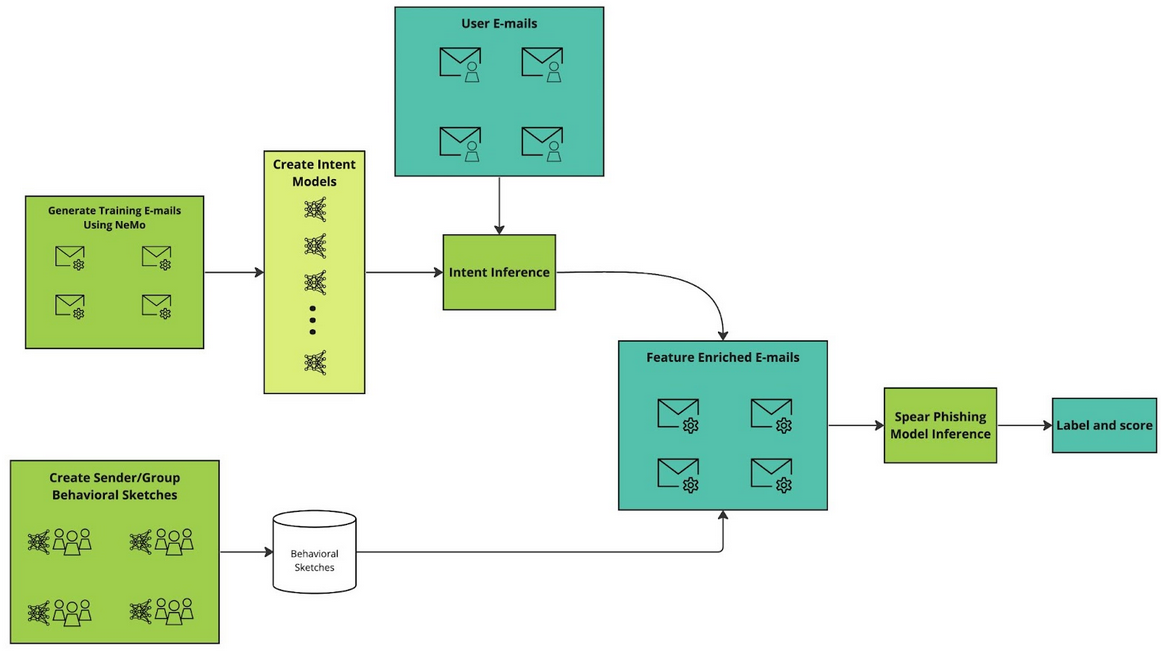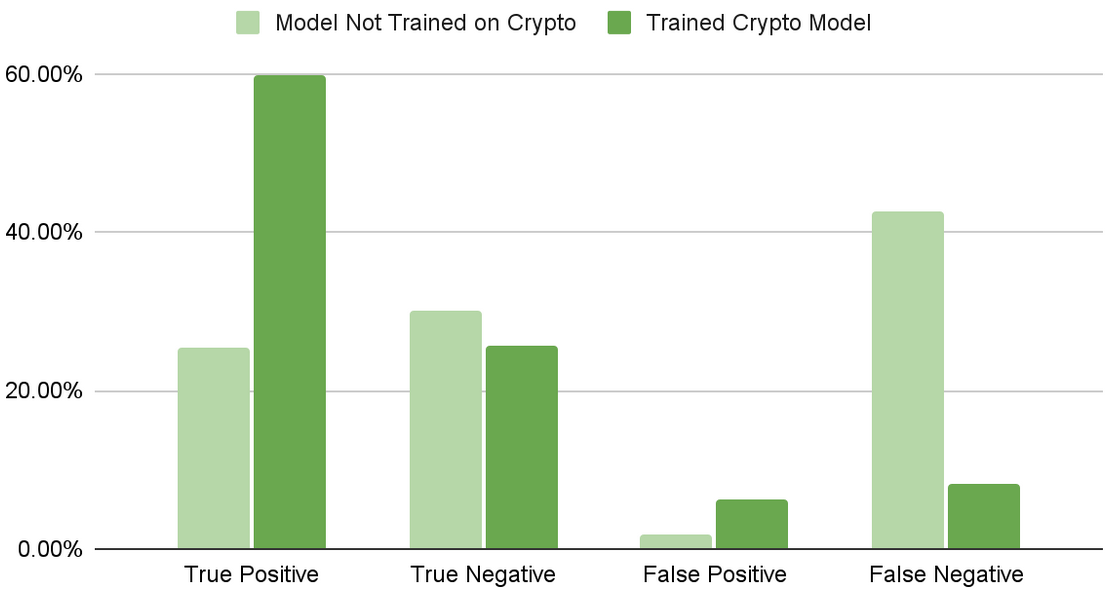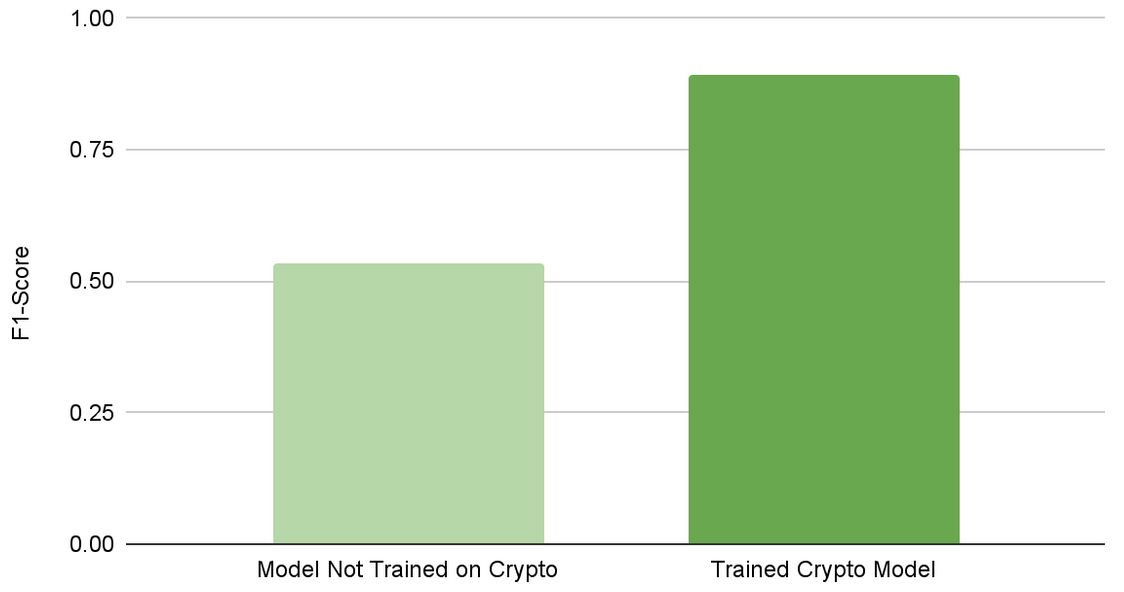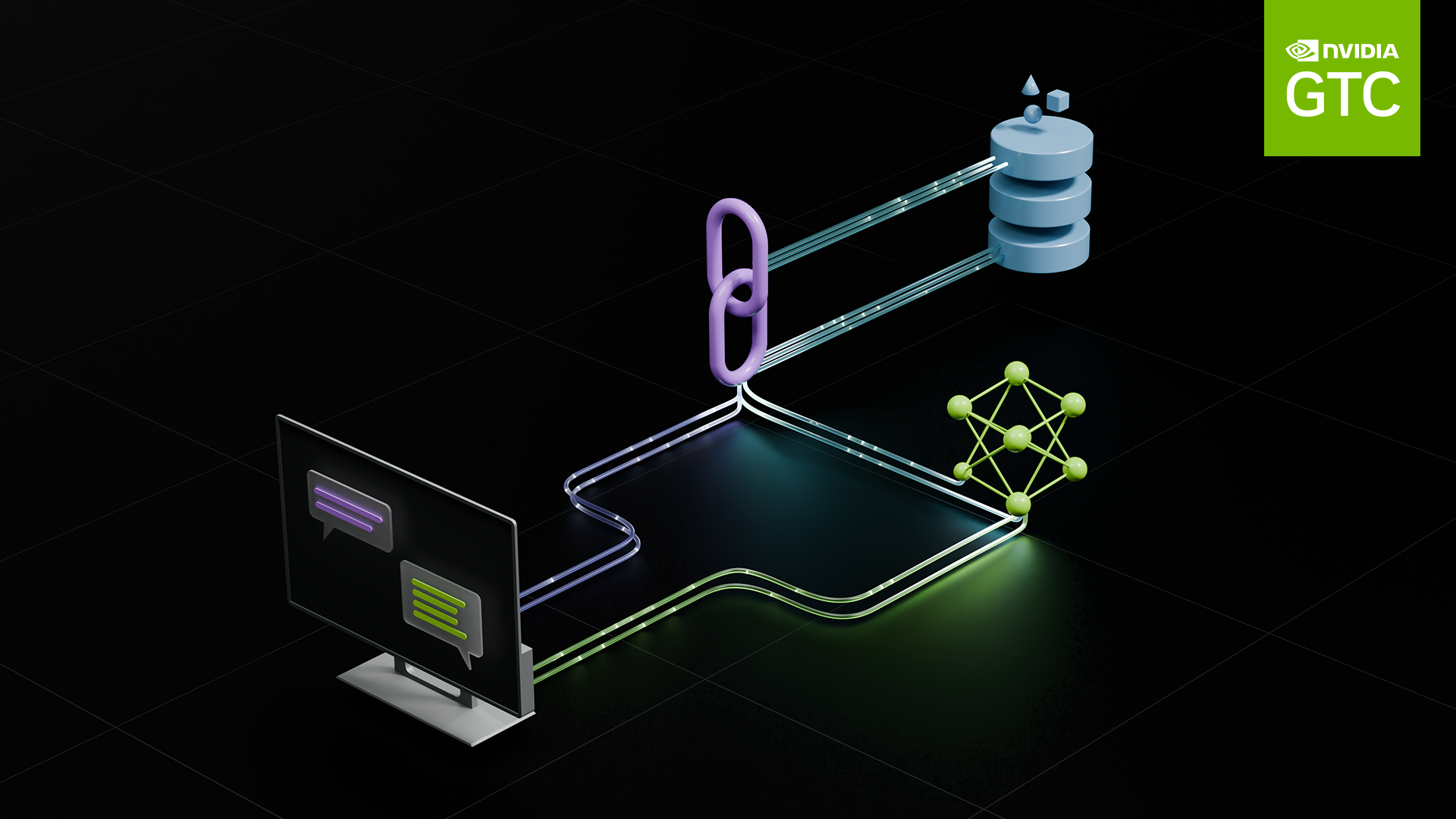Spear phishing is the largest and most costly form of cyber threat, with an estimated 300,000 reported victims in 2021 representing $44 million in reported losses in the United States alone. Business e-mail compromises led to $2.4 billion in costs in 2021, according to the FBI Internet Crime Report. In the period from June 2016 to December 2021, costs related to phishing and spear phishing totaled $43 billion for businesses, according to IBM Security Cost of a Data Breach.
Spear phishing e-mails are indistinguishable from a benign e-mail that a victim would receive. This is also why traditional classification of spear phishing e-mails is so difficult. The content difference between a scam and a legitimate e-mail can be minuscule. Often, the only difference between the two is the intent of the sender: is the invoice legitimate, or is it a scam?
This post details a two-fold approach to improve spear phishing detection by boosting the signals of intent using NVIDIA Morpheus to run data processing and inferencing.
Generating e-mails with new phishing intent
The first step involves using generative AI to create large, varied corpora of e-mails with various intents associated with spear phishing and scams. As new threats emerge, the NVIDIA Morpheus team uses the NVIDIA NeMo framework to generate a new corpus of e-mails with such threats. Following the generation of new e-mails with the new type of phishing intent, the team trains a new language model to recognize the intent. In traditional phishing detection mechanisms, such models would require a significant number of human-labeled e-mails.

Detecting sender intent
The first step targets the intent behind the e-mail. The next step targets the intent of the sender. To defend against spear phishing attacks that use spoofing, known senders, or longer cons that do not express their true intent immediately, we construct additional signals by building up behavioral sketches from senders or groups of senders.
Building on the intent work described above, known senders’ past observed intents are recorded. For example, the first time a known sender asks for money can be a signal to alert the user.
Syntax usage is also observed and recorded. The syntax of new e-mails is compared to the syntax history of the sender. A deviation from the observed syntax could indicate a possible spoofing attack.
Finally, the temporal patterns of a sender’s e-mails are collected and cross-referenced when a new e-mail arrives to check for out-of-pattern behavior. Is the sender sending an e-mail for the first time at midnight on a Saturday? If so, that becomes a signal in the final prediction. These signals in aggregate are used to classify e-mails. They are also presented to the end user as an explanation for why an e-mail may be malicious.
Adapting to new attacks and improving protection
Existing machine learning (ML) methods rely nearly entirely on human-labeled data and cannot adapt to emerging threats quickly. The biggest benefit to detecting spear phishing e-mails using the approach presented here is how quickly the model can be adapted to new attacks. When a new attack emerges, generative AI is leveraged to create a training corpus for the attack. Intent models are trained to detect its presence in received e-mails.
Using models built with NeMo generates thousands of high-quality, on-topic e-mails in just a few hours. The new intents are added to the existing spear phishing detector. The entire end-to-end workflow of creating new phishing attack e-mails and updating the existing models happens in less than 24 hours. Once the models are in place, e-mail processing and inferencing become a Morpheus pipeline to provide near real-time protection against spear phishing threats.
Results
To illustrate the flexibility of this approach, a model was trained using only money, banking, and personal identifying information (PII) intents. Next, cryptocurrency-flavored phishing e-mails were generated using models built with NeMo. These e-mails were incorporated into the original training and validation subsets.
The validation set, now containing the new crypto attacks, was then passed into the original model. Then a second model was trained incorporating the crypto attack intents. Figure 2 shows how the models compare in their detection.
After training for the attack, the F1 score increased from 0.54 to 0.89 (Figure 3). This illustrates how quickly new attacks can be trained for and adapted to using NVIDIA Morpheus and NeMo.


Get started with NVIDIA Morpheus
Watch the video, Improve Spear Phishing Detection with Generative AI for more details. Learn more about how to use NVIDIA Morpheus to detect spear phishing e-mails faster and with greater accuracy using the NVIDIA AI workflow example. You can also apply to try NVIDIA Morpheus in LaunchPad and request a 90-day free trial to test drive NVIDIA Morpheus, part of the NVIDIA AI Enterprise software family.










